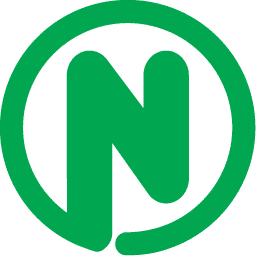What are the Uses Signages and How Do They Work?
Signages are like visual displays that communicate information to customers or potential customers. They can be found in various places, such as storefronts, roadsides, billboards, walls, windows, vehicles, or even online. Signages can have different functions, such as:
- Advertising: Signages can promote products, services, offers, or events to attract attention and generate interest.
- Branding: Signages can reinforce the identity, values, and personality of a business or organization.
- Directional: Signages can guide customers or visitors to a specific location or destination.
- Informational: Signages can provide useful or relevant information, such as opening hours, contact details, prices, or policies.
- Persuasive: Signages can influence customer behavior, such as encouraging them to buy, sign up, or take action.
Signages work by capturing the attention of the viewers and delivering a clear and concise message that is relevant to their needs or interests. Signages also work by creating a positive impression and emotional connection with the viewers and motivating them to take the desired action.

| Key Takeaways |
| – Signages are visual displays that communicate information to customers or potential customers. |
| – Signages have various uses, such as advertising, branding, directional, informational, and persuasive. |
| – Signages can help businesses increase visibility, awareness, communication, engagement, and conversion. |
| – Signages should follow the principles of helpful, reliable, and people-first content, as Google recommends. |
What are the Benefits of Uses of Signages for Businesses?
Signages are beneficial for businesses because they can help them achieve various goals, such as:
- Increase visibility: Signages can make a business stand out from the competition and catch the eye of potential customers.
- Increase awareness: Signages can increase the recognition and recall of a business name, logo, slogan, or product.
- Increase communication: Signages can convey messages that are clear, concise, and compelling to the target audience.
- Increase engagement: Signages can create a positive impression and emotional connection with customers or potential customers.
- Increase conversion: Signages can motivate customers or potential customers to take the desired action, such as visiting a store, making a purchase, or contacting a business.
Examples
To illustrate how signages can benefit different businesses, here are some examples:
| Business | Benefit | Example |
| A coffee shop | Increase visibility | A sign with a catchy slogan and an image of a cup of coffee on the sidewalk to attract pedestrians |
| A clothing store | Increase awareness | A sign with the logo and the name of the store on the storefront to build brand recognition |
| A hotel | Increase communication | A sign with the rates and amenities of the hotel on the entrance to inform guests |
| A salon | Increase engagement | A sign with a testimonial and an image of a satisfied customer on the window to create trust |
| A pizza place | Increase conversion | A sign with a special offer and a call to action on the door to encourage orders |
How to Create Search-Optimized Content for Your Business
Creating search-optimized content for your business requires careful planning and execution. Here are some steps to follow:
- Choose your keywords: Keywords are the words or phrases that people use to search for information on Google or other search engines. You should choose keywords that are relevant to your business, have high search volume, and low competition. You can use tools like Ahrefs1 or Google Keyword Planner2 to find and analyze keywords for your topic.
- Craft your page title: Your page title is the first thing that searchers see when they find your content in the search results. It should include your main keyword and a compelling reason for them to click on your page. It should also be no longer than 60 characters, as anything longer will be truncated by Google.
- Create an SEO-friendly URL: Your URL is the address of your page on the web. It should include your main keyword and be descriptive of your content. It should also be short and easy to read, as long URLs can be confusing and unappealing to users.
- Write the content: Your content is the main body of your page that provides information to your readers. It should be long enough to cover your topic in depth, but not too long that it becomes boring or overwhelming. A good rule of thumb is to aim for at least 1000 words per page, but this may vary depending on your niche and audience. You should also use headings, subheadings, lists, tables, images, videos, and other elements to break up your text and make it more readable and engaging.
- Add your keywords in strategic places: You should use your main keyword and related keywords throughout your content, but not too often that it becomes unnatural or spammy. A good practice is to use your main keyword in the first paragraph, in at least one heading, and in the conclusion. You should also use related keywords or synonyms in other places where they fit naturally. You can use tools like LSI Graph3 or AnswerThePublic4 to find related keywords or questions that people ask about your topic.
- Optimize your meta tags: Meta tags are snippets of code that provide information about your page to search engines and users. They include the meta title, meta description, and meta keywords. The meta title is the same as your page title, but it can be slightly different if you want to optimize it for different platforms or devices. The meta description is a short summary of your page that appears below the title in the search results. It should include your main keyword and a call to action that entices users to click on your page. It should also be no longer than 160 characters, as anything longer will be cut off by Google. The meta keywords are a list of keywords that describe your page, separated by commas. They are not very important for SEO anymore, as Google does not use them for ranking purposes, but they can still help other search engines understand your content better.
- Optimize your images: Images are visual elements that enhance your content and make it more appealing to users.
However, they can also slow down your page loading speed and affect your SEO performance if they are not optimized properly. To optimize your images, you should do the following:
- Use relevant and descriptive file names that include your keywords
- Use appropriate file formats that suit your image quality and size, such as JPEG, PNG, or GIF
- Use alt text that describes your image and includes your keywords
- Use captions that explain your image and provide additional information
- Use image compression tools like TinyPNG5 or ImageOptim to reduce your image file size without compromising quality
- Use responsive images that adapt to different screen sizes and resolutions
Related Questions and Answers
Here are some related questions and answers that people might have about signages:
| Question | Answer |
| What are the best practices for signage? | Some best practices for signages are: – Use clear and simple language that is easy to read and understand – Use high-contrast colors that make the text stand out from the background – Use appropriate fonts that match the tone and style of the message – Use images that are relevant and appealing to the target audience – Use white space to create balance and focus on the message – Use consistent branding elements, such as logo, colors, and fonts, across all signages |
| What are the challenges of signage? | Some challenges of signages are: – Complying with local regulations and laws that may limit the size, location, or content of signages – Competing with other signages or distractions that may reduce the visibility or effectiveness of signages – Measuring the impact or return on investment of signages – Maintaining and updating signages to keep them fresh and relevant |
| What are the trends of signage? | Some trends in signage are: – Using digital signage that can display dynamic and interactive content – Using eco-friendly signage that uses renewable materials or energy sources – Using personalized signage that can tailor the content to the individual viewer – Using social media signage that can integrate with online platforms or networks |
Conclusion
Signages are visual displays that communicate information to customers or potential customers. They have various uses, such as advertising, branding, directional, informational, and persuasive. They can help businesses increase visibility, awareness, communication, engagement, and conversion. To create effective signage for your business, you should follow some steps and principles that will help you define your target audience, location, purpose, message, design, and budget. You should also follow the guidelines from Google for creating helpful, reliable, and people-first content. By doing so, you can create signages that will benefit your business and your customers.
